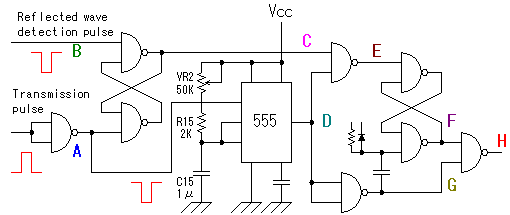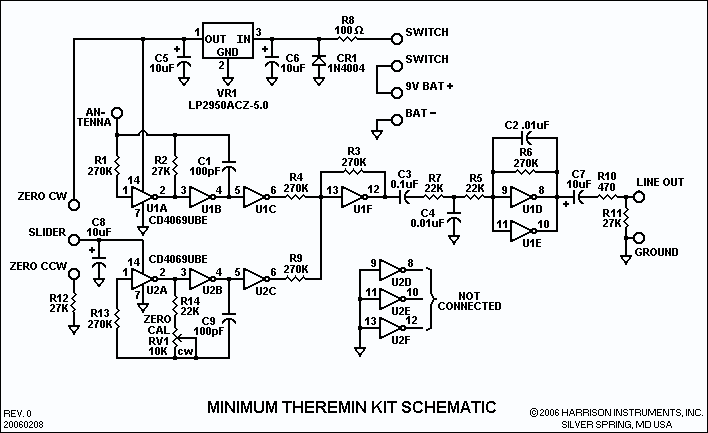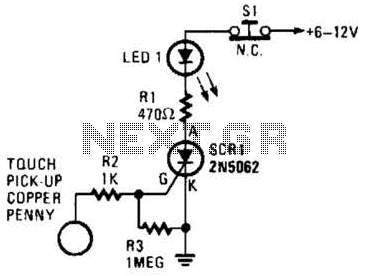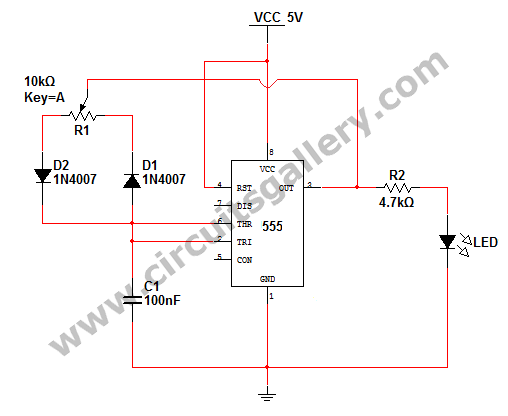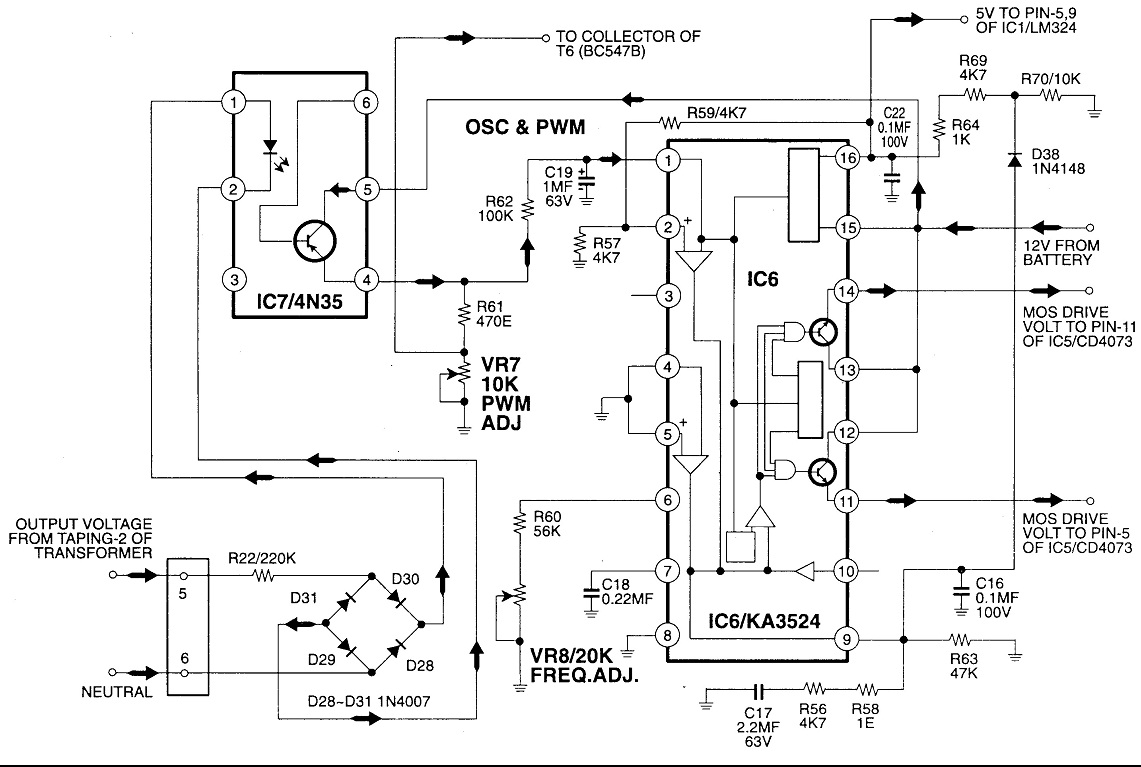
Phone camera flash control circuit
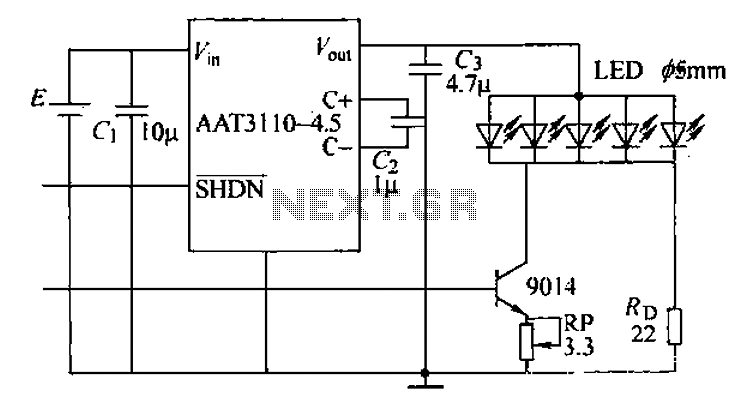
A circuit designed for a phone photo camera flash that delivers a peak current of 200mA. It utilizes the AAT3110-4.5 capacitive charge pump chip to boost and regulate the lithium battery voltage to 4.5V. This voltage powers a series of light-emitting diodes (LEDs) that operate at a peak current ranging from 100mA to 200mA. The peak current flows through a switch, forming a loop that generates a flash. The circuit includes an input filter capacitor with a capacitance of 10µF, an output filter capacitor with a capacitance of 4.7µF, and a storage capacitor with a capacitance of 1µF. Resistor R1 serves as a balancing resistor for the LED light-emitting tubes, while resistor RP is used for peak current regulation; adjusting RP allows for setting the desired peak current.
The circuit operates on the principle of a capacitive charge pump, which is a type of DC-DC converter that steps up the input voltage to a higher output voltage using capacitors as energy storage elements. The AAT3110-4.5 chip is specifically designed for such applications, providing efficient voltage boosting while maintaining a compact design suitable for mobile devices.
In this application, the lithium battery, typically around 3.7V, is boosted to 4.5V, which is suitable for driving high-brightness LEDs. The output filter capacitor (4.7µF) smooths the output voltage, ensuring stable operation of the LEDs during the flash event. The storage capacitor (1µF) temporarily holds charge to provide the necessary current during the peak flash period.
Resistor R1 is crucial for balancing the current across multiple LEDs, ensuring uniform brightness and preventing any single LED from being overdriven, which could lead to premature failure. The peak current regulation resistor RP allows for fine-tuning of the flash intensity. By adjusting the resistance value of RP, the user can control the peak current flowing through the LEDs, thus adjusting the brightness of the flash according to specific requirements.
Overall, this circuit design is optimized for providing a reliable and adjustable flash for mobile phone cameras, enhancing low-light photography capabilities while ensuring efficient power management from the device's battery.200mA peak current letter phone photo camera flash circuit, using a AAT3110-4.5 electrical capacitive charge pump chip, the phone lithium battery voltage boost and regulated to 4.5V, to a group of light-emitting diode (LED) provide work for the voltage and 100 ~ 200mA peak current. The peak current through the switch as a flash of VF form a loop. The charge pump input filter capacitor capacitance of lOtiF, output filter capacitor electric capacity 4.
7vF, storage capacitor capacitance of ltiF. Ri, LED light-emitting tube balancing resistor. RP is the peak current regulation section resistance, adjust the resistance of RP can be set peak current size.
The circuit operates on the principle of a capacitive charge pump, which is a type of DC-DC converter that steps up the input voltage to a higher output voltage using capacitors as energy storage elements. The AAT3110-4.5 chip is specifically designed for such applications, providing efficient voltage boosting while maintaining a compact design suitable for mobile devices.
In this application, the lithium battery, typically around 3.7V, is boosted to 4.5V, which is suitable for driving high-brightness LEDs. The output filter capacitor (4.7µF) smooths the output voltage, ensuring stable operation of the LEDs during the flash event. The storage capacitor (1µF) temporarily holds charge to provide the necessary current during the peak flash period.
Resistor R1 is crucial for balancing the current across multiple LEDs, ensuring uniform brightness and preventing any single LED from being overdriven, which could lead to premature failure. The peak current regulation resistor RP allows for fine-tuning of the flash intensity. By adjusting the resistance value of RP, the user can control the peak current flowing through the LEDs, thus adjusting the brightness of the flash according to specific requirements.
Overall, this circuit design is optimized for providing a reliable and adjustable flash for mobile phone cameras, enhancing low-light photography capabilities while ensuring efficient power management from the device's battery.200mA peak current letter phone photo camera flash circuit, using a AAT3110-4.5 electrical capacitive charge pump chip, the phone lithium battery voltage boost and regulated to 4.5V, to a group of light-emitting diode (LED) provide work for the voltage and 100 ~ 200mA peak current. The peak current through the switch as a flash of VF form a loop. The charge pump input filter capacitor capacitance of lOtiF, output filter capacitor electric capacity 4.
7vF, storage capacitor capacitance of ltiF. Ri, LED light-emitting tube balancing resistor. RP is the peak current regulation section resistance, adjust the resistance of RP can be set peak current size.
